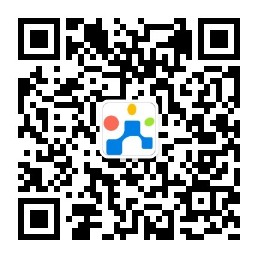资源描述:
全日制硕士学位论文全日制硕士学位论文 基于应变模态的采煤机摇臂振动特性及实验研究 Vibration Characteristics and Experimental Research of Shearer RangingArm Based on Strain Mode 作者姓名李文政 导师姓名 田立勇副教授 学科专业机械工程 研究方向机械电子工程 完成日期 2020年 8月 11日 辽宁工程技术大学 Liaoning Technical University 万方数据 基 于 应 变 模 态 的 采 煤 机 摇 臂 振 动 特 性 及 实 验 研 究 李 文 政 辽 宁 工 程 技 术 大 学 万方数据 关于学位论文使用授权的说明关于学位论文使用授权的说明 本学位论文作者及指导教师完全了解 辽宁工程技术大学辽宁工程技术大学 有关保 留、使用学位论文的规定,同意 辽宁工程技术大学辽宁工程技术大学 保留并向国家有关 部门或机构送交论文的复印件和磁盘,允许论文被查阅和借阅,学校可 以将学位论文的全部或部分内容编入有关数据库进行检索,可以采用影 印、缩印或扫描等复制手段保存、汇编本学位论文。 保密的学位论文在解密后应遵守此协议。 学位论文作者签名____________导师签名_____________ 年月日年月日 万方数据 中图分类号TD421学校代码10147 UDC621密级公 开 辽宁工程技术大学 全日制硕士学位论文全日制硕士学位论文 基于应变模态的采煤机摇臂振动特性及实验研究 Vibration Characteristics and Experimental Research of Shearer RangingArm Based on Strain Mode 作者姓名李文政学号 471720034 导师姓名田立勇(副教授)副导师姓名(教授) 申请学位工学硕士培养单位机械工程学院 学科专业机械工程研究方向机械电子工程 二○二○年八月 万方数据 致致 谢谢 时光飞逝,转眼研究生的学习生活就要落下帷幕,我心中满是感慨。2013 年我满怀对 未来的憧憬来到辽宁工程技术大学,在这里充实的度过了 7 年的大学时光,如今,我即将 从这所学校毕业,回首过去,收获良多,不仅提高了自己的专业知识水平,拓展了自己的 校内外实习经历,也锻炼了自己为人处事的能力。值此论文完成之际,我要感谢所有给予 我帮助和温暖的老师和同学们。 首先,我要感谢我的导师田立勇副教授,不论是作为本科班主任还是研究生导师,田 老师这七年的时间里, 在学业和生活上都给予我无微不至的关怀。 尤其是在论文撰写期间, 从论文的选题、提纲,到初稿至整篇论文定稿,都离不开田老师耐心的教导和指点。是田 老师一次又一次的细心纠正帮助我完善了我的论文。 其次,我要感谢在学期间每一位任课教师,是你们的兢兢业业、诲人不倦让我学到了 创作论文的知识基础;感谢陈洪月教授,在论文撰写期间对文章思路、仿真与实验等内容 的点拨;感谢谭淼、戴渤鸿、张一辙、张锦茹、张佳瑶、芦晶晶等硕士研究生以及同实验 室的师兄弟们,他们使我的研究生生涯充满了友情的温暖与快乐,并在论文撰写过程中给 予大力支持和鼓励,让我在完成毕业论文过程中更加得心应手。 最后,感谢在百忙之中对本论文进行审阅的各位专家、老师,你们辛苦了 万方数据 I 摘摘要要 摇臂作为采煤机的重要组成,在工作过程中直接承载各类波动剧烈的内外激励而产生 强烈的振动响应。长此以往,摇臂相比采煤机其他部件更容易出现过载或疲劳损坏现象, 严重影响井下安全生产,因此,研究其振动特性十分必要。 本文以 MG500/1180-WD 型采煤机左截割部摇臂为研究对象,基于 EDEM 建立滚筒 煤壁耦合截割离散元模型,仿真模拟滚筒截割煤壁过程以获取截割滚筒三向截割载荷及三 向截割阻力矩。应用 ADAMS 建立采煤机摇臂刚柔耦合模型进行动力学分析获取摇臂载荷 谱后,在位移模态分析与应变模态分析基础上,利用 ANSYS 对摇臂壳体进行瞬态动力学 分析,验证应变模态分析方法计算固有频率可行性。提出一种基于应变模态分析的采煤机 摇臂振动特性分析方法,从位移模态下的有效独立法出发,推导适用于应变模态的有效独 立驱动点残差法,提取初选测点前 6 阶应变模态应变分布构建模态矩阵,通过 MATLAB 数值分析对摇臂应变传感器进行优化布置。现场实验验证依托于中煤张家口煤矿机械装备 有限责任公司综采成套装备模拟试验台,搭建摇臂应变数据采集系统采集空载下直行、重 载下斜切进刀以及重载下直行截割三个工况摇臂关键截面应变响应,并对实验数据进行时 域与频域分析,结果表明重载斜切阶段摇臂振型为 1 阶位移模态振型,重载直行阶段摇 臂振型为 2 阶位移模态振型,应变模态分析方法可有效识别采煤机摇臂低阶固有频率和低 频激励,为采煤机摇臂振动的研究提供新思路。 该论文有图 44 幅,表 14 个,参考文献 76 篇。 关键词关键词采煤机摇臂;离散元;动力学;有限元;应变模态;振动特性;实验测试 万方数据 II Abstract As an important component of shearer, the ranging arm directly bears all kinds of internal and external excitations which fluctuate violently in the course of work and produces strong vibration response. In the long run, the ranging arm is more prone to overload or fatigue damage than other parts of shearer, which seriously affects the safety of underground production. Therefore, it is necessary to study its vibration characteristics. This paper takes the left cutting unit ranging arm of MG500/1180WD type shearer as the research object, a discrete element model of the drum-coal coupling cutting is established based on EDEM which simulates the process of drum cutting to obtain the three-direction cutting load and the three-direction cutting resistance moment. Using ADAMS to establish the rigid-flexible coupling model of the shearer ranging arm for dynamic analysis to obtain its load spectrum. Based on the displacement modal analysis and strain modal analysis, the transient dynamic analysis of the ranging arm is carried out by ANSYS, which verify the feasibility of the strain modal analysis to calculate the natural frequency. A for analyzing the vibration characteristics of the shearer ranging arm based on strain modal analysis is proposed. Based on the effective independent in displacement mode, the effective independent-driving point residual suitable for strain mode is derived. The 6th-order strain modes of the primary measuring point are extracted to construct the modal matrix, and the placement of ranging arm’s strain sensors are optimized through MATLAB numerical analysis. The experiment relied on the experiment plat of China Coal Zhangjiakou Coal Mining Machinery Co. Ltd. Set up the ranging arm strain data acquisition system to collect the critical section strain response of ranging arm under three working conditions of no-load straight cutting, heavy load oblique cutting and heavy load straight cutting, and analyze the experimental data in time and frequency domains. The analysis results show that the vibration mode of the ranging arm in the heavy-load oblique cutting stage is the first-order displacement mode mode, and the vibration mode of the ranging arm in the heavy-load straight-travel stage is the second-order displacement mode mode. The strain modal analysis can effectively identify the low-order natural frequency and low-frequency excitation of the shearer ranging arm, which provides a new idea for the research of the shearer rocker arm vibration. Keywords shearer ranging arm;discrete element ;dynamics;finite element ;strain model; vibration characteristics;experimental test. 万方数据 III 目目录录 摘摘要要............................................................................................................................................. I I 目目录录......................................................................................................................................... IIIIII 图清单图清单........................................................................................................................................ VIIVII 表清单表清单............................................................................................................................................ X X 变量注释表变量注释表..................................................................................................................................XIXI 1 1 绪论绪论............................................................................................................................................. 1 1 1.1 课题来源及研究背景与意义................................................................................................. 1 1.2 课题研究现状......................................................................................................................... 2 1.3 课题研究内容及章节安排..................................................................................................... 4 2 2 采煤机截割部三维实体建模与理论研究采煤机截割部三维实体建模与理论研究...........................................................................7 7 2.1 采煤机简介...........................................................................................................................7 2.2 采煤机截割部零部件三维实体建模及装配.................................................................. 8 2.3 采煤机摇臂受力分析.......................................................................................................11 2.4 应变模态分析理论............................................................................................................13 2.5 本章小结.............................................................................................................................16 3 3 基于离散元素法的滚筒基于离散元素法的滚筒煤岩耦合截割模型建立与仿真煤岩耦合截割模型建立与仿真..........................................1818 3.1 EDEM 软件及其基本理论..................................................................................................18 3.2 滚筒煤壁耦合截割离散元模型建立与仿真............................................................22 3.3 本章小结.............................................................................................................................26 4 4 采煤机摇臂振动特性分析采煤机摇臂振动特性分析...................................................................................................2727 4.1 采煤机摇臂刚柔耦合模型建立与仿真.........................................................................27 4.2 采煤机摇臂模态分析.......................................................................................................31 4.3 采煤机摇臂瞬态动力学分析..........................................................................................41 4.4 本章小结.............................................................................................................................43 5 5 采煤机摇臂应变传感器优化布置及补偿采煤机摇臂应变传感器优化布置及补偿.........................................................................4444 5.1 有效独立-驱动点残差法.................................................................................................44 5.2 应变传感器优化布置.......................................................................................................46 5.3 本章小结.............................................................................................................................48 6 6 采煤机摇臂振动特性实验研究采煤机摇臂振动特性实验研究..........................................................................................4949 万方数据 IV 6.1 实验平台简介....................................................................................................................49 6.2 实验方案.............................................................................................................................50 6.3 实验结果与分析................................................................................................................52 6.4 本章小结.............................................................................................................................57 7 7 结论与展望结论与展望.............................................................................................................................5959 7.1 结论......................................................................................................................................59 7.2 创新点.................................................................................................................................60 7.3 展望......................................................................................................................................60 参考文献参考文献......................................................................................................................................6161 作者简历作者简历......................................................................................................................................6565 学位论文原创性声明学位论文原创性声明................................................................................................................6666 学位论文数据集学位论文数据集.........................................................................................................................6767 万方数据 V ContentsContents Abstract.........................................................................................................................................I I Contrnts......................................................................................................................................III List of Figures..........................................................................................................................VIIVII List of Tables................................................................................................................................X X List of Variables.........................................................................................................................XIXI 1 Introduction.................................................................................................................................1 1.1 The Source,Research Background and Significance of Project.................................................1 1.2 Current Status of Research........................................................................................................ 2 1.3 Research Content and Chapter Arrangement.............................................................................4 2 Three-Dimensional Solid Modeling of Shearer Cutting Unit and Theoretical Research........................................................................................................................................7 2.1 Introduction of Shearer..............................................................................................................7 2.2 Three-Dimensional Solid Modeling and Assembly of Shearer Cutting Unit............................8 2.3 ForceAnalyasis of Shearer Ranging Arm................................................................................11 2.4 Theory of Strain Modal Analysis.............................................................................................13 2.5 Summary..................................................................................................................................16 3 Establishment and Simulation of Drum-Coal Coupling Cutting Model Based on Discrete Element ........................................................................................................18 3.1 EDEM Software and Its Basic Theory.................................................................................... 18 3.2 Establishment and Simulation of Drum-Coal Coupling Cutting Discrete Element Model.....22 3.3 Summary..................................................................................................................................26 4 Analysis on Vibration Characteristics of Shearer Ranging Arm...............................27 4.1 Establishment and Simulation of Rigid-flexible Coupling Model of Shearer Ranging Arm..27 4.2 Modal Analysis of Shearer Ranging Arm................................................................................31 4.3 Transient Dynamics Analysis of Shearer Ranging Arm..........................................................41 4.4 Summary..................................................................................................................................43 5 Optimal Arrangement and Compensation of Shearer Ranging Arms Strain Sensors.........................................................................................................................................44 5.1 Effective Independence-Driving Point Residue...................................................................... 44 万方数据 VI 5.2 Optimal Arrangement of Shearer Ranging Arms Strain Sensors..................................46 5.3 Summary..................................................................................................................................48 6 Experimental Study on Vibration Characteristics of Shearer RangingArm..................... 49 6.1 Brief Introduction of Experimental Plat..........................................................................49 6.2 Experimental Scheme..............................................................................................................50 6.3 Experimental Results and Analysis......................................................................................... 52 6.4 Summary..................................................................................................................................57 7 Conclusions and Prospect....................................................................................................59 7.1 Conclusions............................................................................................................................. 59 7.2 Innovation Points...................................................................
展开阅读全文

